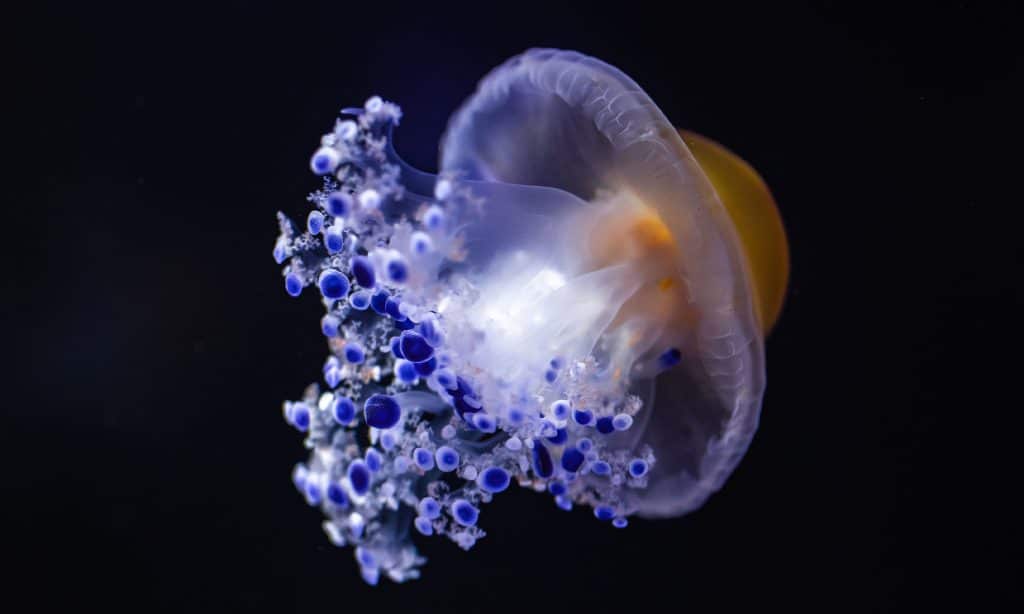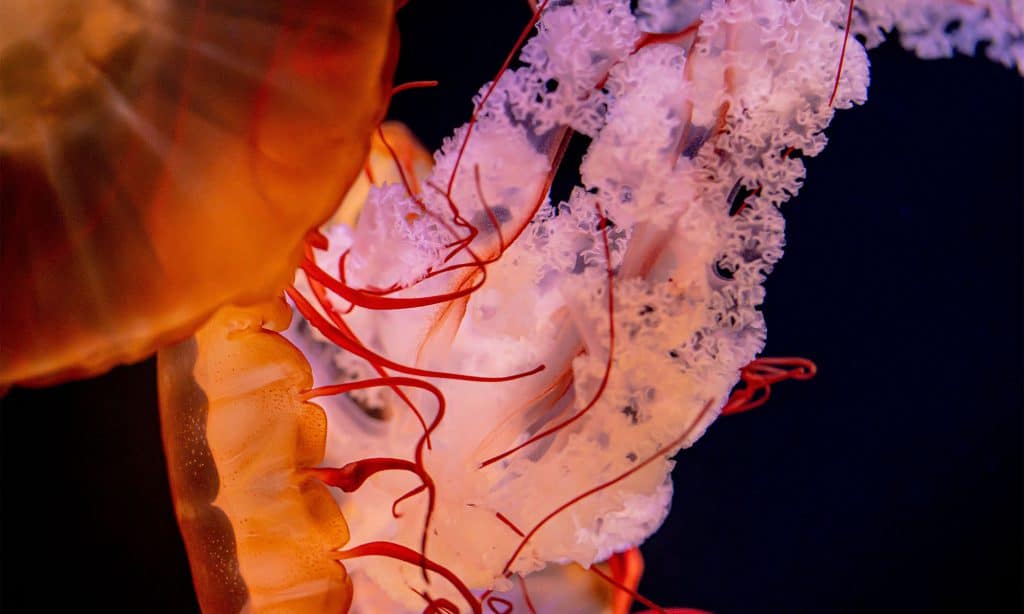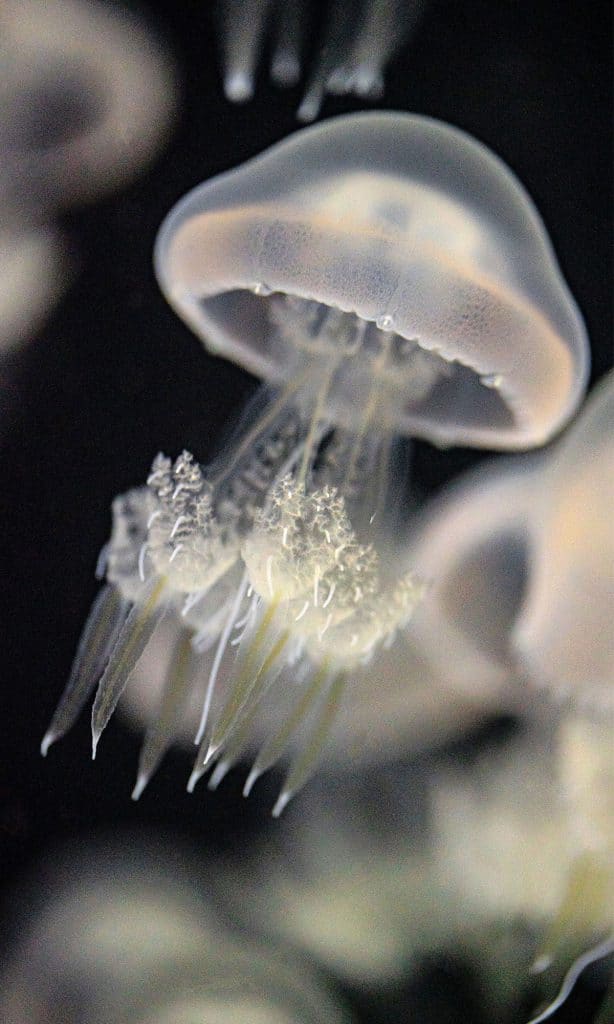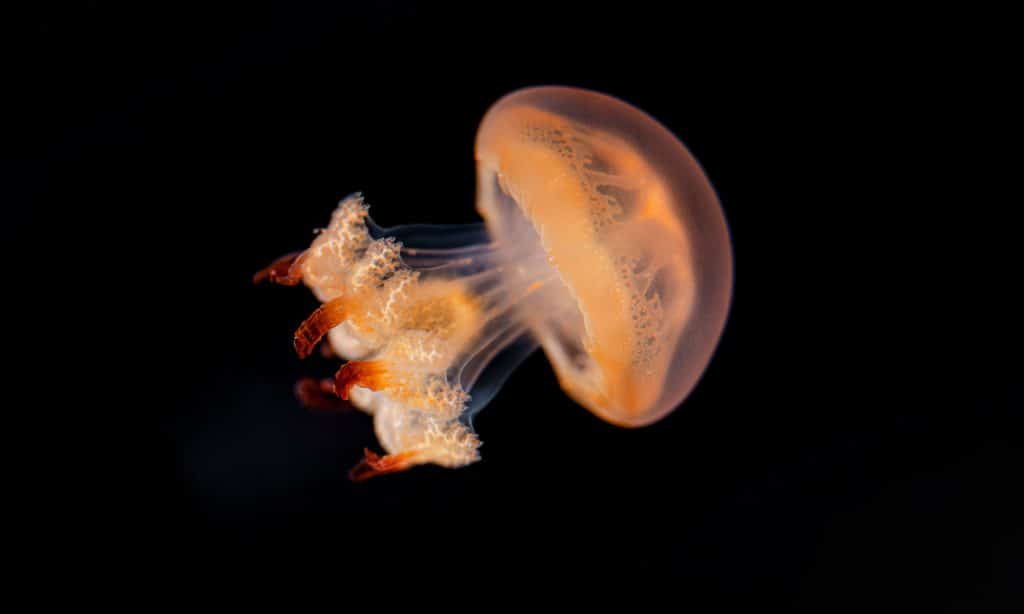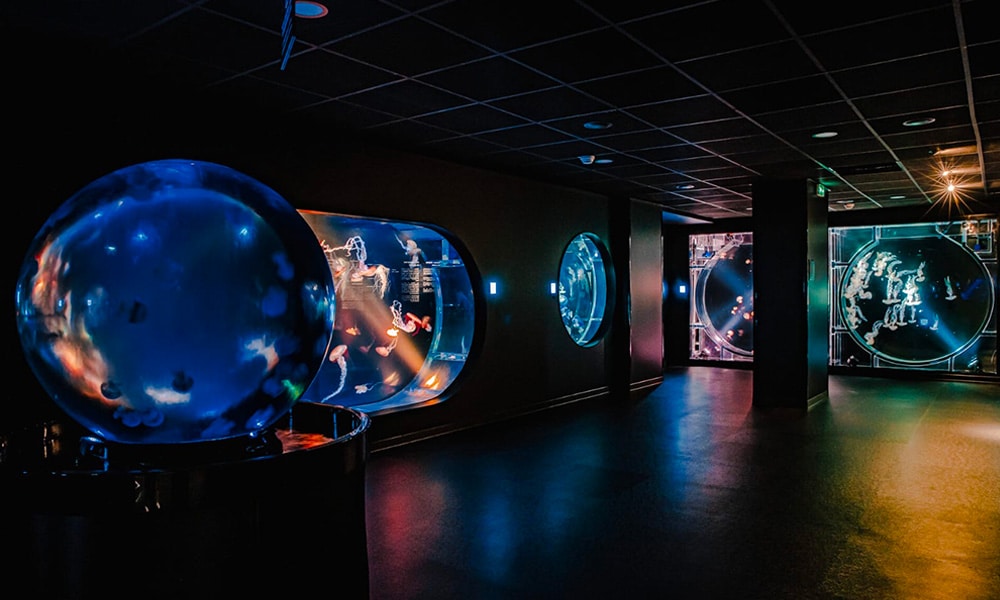Home > Life at the Biarritz Aquarium > Our animals > The jellyfish
The Jellyfish of the Aquarium de Biarritz
Jellyfish are as fascinating as they are mysterious. Composed of about 96% water and lacking both a heart and a brain, jellyfish inhabit all the oceans of the world. They drift with the currents and play a role in maintaining the balance of marine ecosystems.
Discover the new jellyfish space
10 species of jellyfish in spectacular tanks, including a panoramic aquarium. An immersive video and a recreated laboratory reveal their life cycle and reproduction. This unique project was completed in 60 days by the Aquarium’s teams.
Discovery and immersion
The Biarritz Aquarium unveils a brand-new space entirely dedicated to jellyfish. This immersive journey showcases ten fascinating jellyfish species from oceans across the globe. Thanks to kreisels (aquariums specially designed for jellyfish) and a recreated breeding lab, visitors can explore the jellyfish life cycle, their anatomy, feeding habits, and their incredible ability to drift with ocean currents. A mesmerizing dive into a little-known marine world.
Technical achievement and science outreach
Equipped with several kreisels, including one over 4 meters long, this new zone of the Biarritz Aquarium offers ideal viewing conditions to observe these captivating marine animals, which have existed for over 500 million years. Completed in just 60 days by the technical and aquarist teams, this project places scientific mediation and education at the heart of the visit. The goal: to help visitors better understand these expanding species found throughout the world’s oceans.
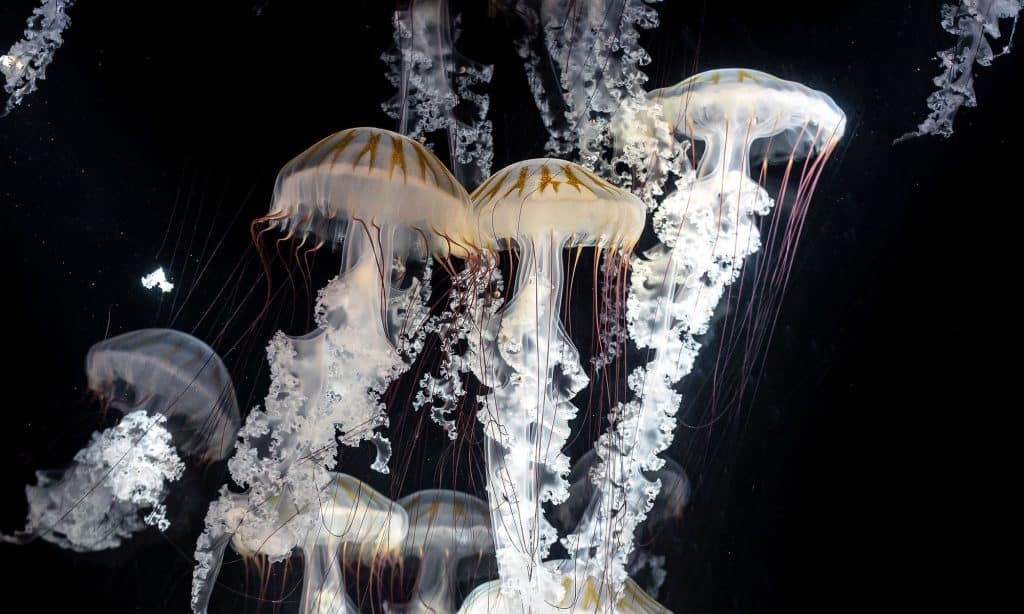
An extraordinary organism
Jellyfish belong to the phylum Cnidaria, just like corals and sea anemones. They lack a skeleton but have a primitive nervous system and stinging cells called cnidocytes, which they use to catch prey and defend themselves.
A key role in the marine ecosystem
Jellyfish are both predators and prey. They feed on plankton, small fish, and crustaceans, while also serving as food for many marine animals such as turtles, tuna, swordfish, and some seabirds. Their presence is an indicator of ocean health, although excessive blooms can signal ecological imbalances, often caused by human activity.
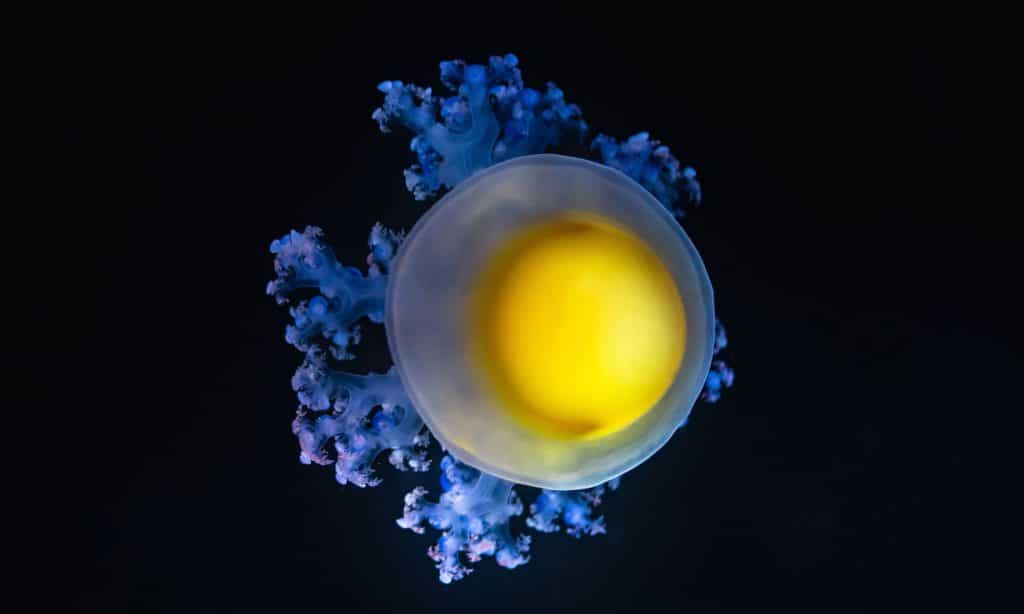
Discover the laboratory during the behind-the-scenes tour
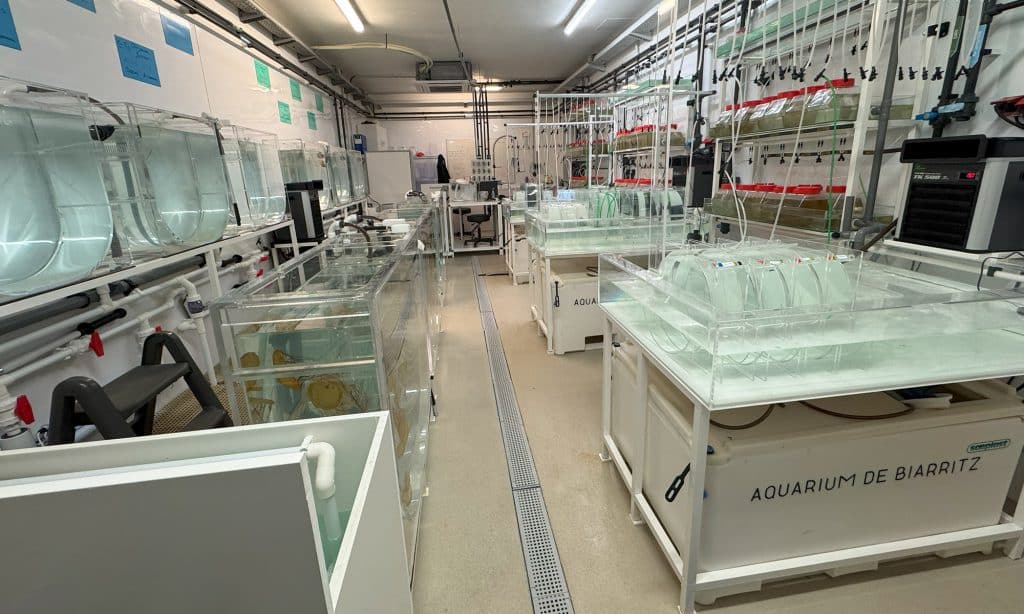
Usually closed to the public, the jellyfish lab opens its doors during behind-the-scenes visits.
You’ll see around thirty species in their polyp stage and about fifteen kreisels where they grow. Temperature, salinity, lighting—every parameter is controlled for their well-being. Our teams will explain how these fragile organisms are raised, from the polyp stage to their arrival in the display tanks.
From age 8.
Jellyfish species at the Aquarium de Biarritz
Mosaic jellyfish, Cassiopeia, or moon jellyfish, the Aquarium de Biarritz houses a unique collection of cnidarians displayed in a newly redesigned space. The jellyfish live in special tanks called kreisels that simulate their natural marine environment by generating constant water flow.
Frequently asked questions
Do jellyfish have a heart or a brain?
Jellyfish have neither a heart nor a brain. Nutrients and oxygen diffuse through their tissues, with no need for a circulatory system. Despite lacking a centralized brain, jellyfish do have a nervous system—albeit a diffuse one—which allows them to process information such as light, orientation, touch, and smells. Some species even experience inactive phases, similar to sleep.
How does the Aquarium de Biarritz care for jellyfish?
Our aquarists recreate conditions similar to their natural environment by controlling water temperature, current, and food supply. Jellyfish are raised in special tanks called kreisel aquariums, which replicate open-sea conditions with continuous water flow to keep them suspended. They require specific, nutritious food that won’t pollute the tank. For this, various types of live zooplankton are cultivated at the Aquarium to provide the jellyfish with healthy, natural-like daily feedings.
Can jellyfish adapt to all oceans?
Jellyfish inhabit all oceans, from tropical waters to the poles, from the deep sea to shallow lagoons. Some species even live in freshwater.
